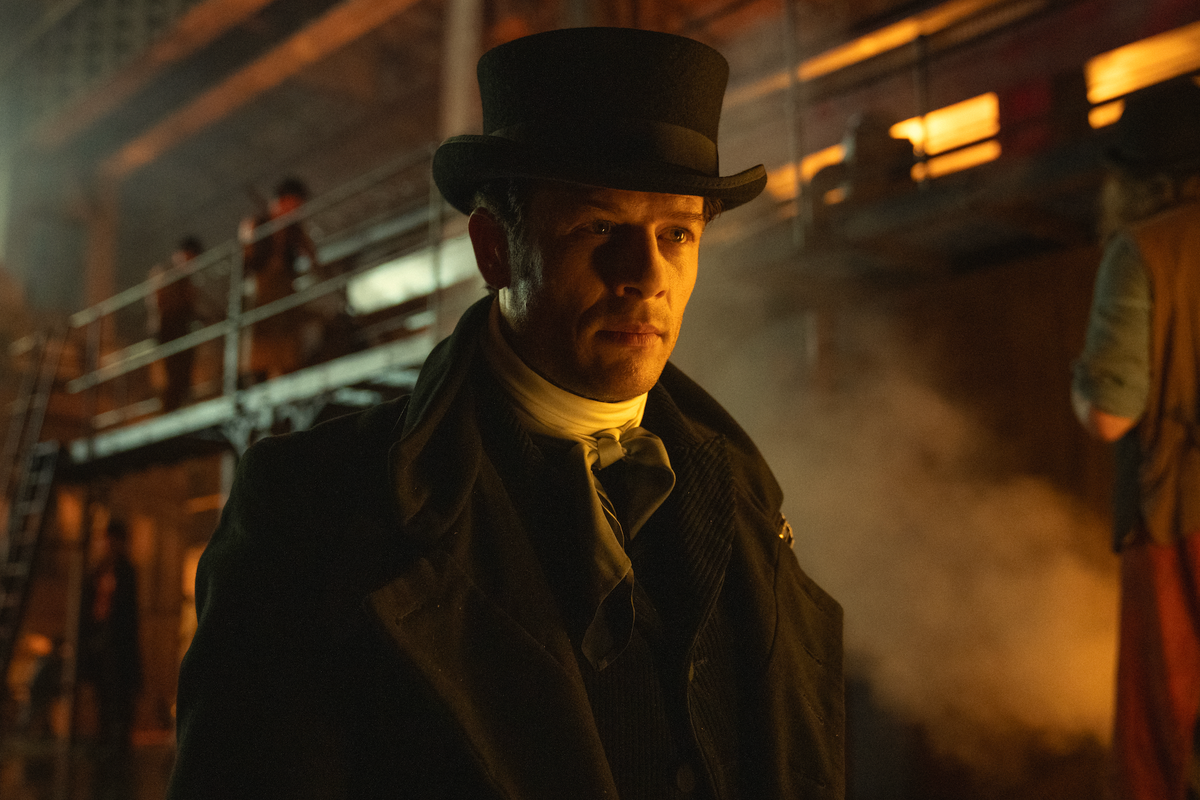A pint of Guinness is a beautiful thing. That stripe of off-white head at the top of the glass giving way to the brooding black abyss of stout below. That contrast is part of what has made the drink iconic. And it’s a colour palette that has – quite naturally – inflected Steven Knight’s new drama, House of Guinness, about family wranglings within the Guinness clan. But where those tarry shades have become part of the drink’s mystique, has the television programme simply fallen foul of the modern trend for lighting shows with an unwatchably funereal gloominess?
From House of the Dragon to The Luminaries, The Handmaid’s Tale to Wolf Hall and Great Expectations (another Knight vehicle), accusations of excessive dreariness have dogged recent telly. Back in 2019, viewers tuned into a climactic episode of Game of Thrones’s final season – “The Long Night” – only to discover that the last battle for the living residents of Westeros would occur during the uncannily realistic nighttime. “This battle is fun but also totally visually incomprehensible,” one tweeter observed. “How do u switch this show from night mode?” another asked. As the show’s critical reputation degenerated in its twilight weeks, these issues felt symbolic.
Darkness hides many things. The most commonly deployed defence is that it adds to the verisimilitude. After all, that fight for the soul of the Seven Kingdoms happened under moonlit skies in a fantasy universe without electrical lighting. So why wouldn’t it be dark? “We want you to be subjected to the feeling of claustrophobia, anxiety, and frustration that these characters are experiencing,” the episode’s director, Miguel Sapochnik, told an interviewer. And it’s true: “The Long Night” is disorientating in many ways. Some good, many bad.
Another helpful function of turning the dimmer down is cost saving. While Sapochnik was out defending the creative decisions behind the episode, his director of photography (who is ultimately responsible for lighting decisions on a film set), Fabian Wagner, was being more practical. “VFX didn’t have the money to show an army of Whites in every shot,” he said in an interview, “so we embraced the darkness even more.” Even on a VFX-heavy show like Game of Thrones – which is also one of the most expensive small-screen projects in history – the budget is not limitless. A show like the BBC’s recent Battle of Hastings epic, King & Conqueror, is far more constrained. For them, the dingy tent corners don’t just reduce the necessity for photorealistic CGI rendering, but also sand down the imprecision of the whole production.
If you are composing a historical epic – like King & Conqueror or House of Guinness, which is set in late 1860s Dublin – you are faced with daunting requirements from almost every department. Costumes and props must be period-appropriate, without looking too box-fresh. Houses and cars, castles and horses; all need to blend with the period setting. Here, darkness is convenient. The illusion of candle or oil lamp-lit scenes allows the shadows to consume the detail. The colour grade, too, is often used to alter the visual profile of the scene, particularly when making the blacks truer. But decrease the “black point” too far, and you run the risk of “crushing the blacks”, creating a palette that looks like it’s been confected by a moody teenager on a MacBook Photo Booth.

Does any of this matter, though? Isn’t art subjective? The BBC’s 2014 adaptation of Daphne du Maurier’s Jamaica Inn was roundly condemned by viewers for its inaudible dialogue (resulting in a quarter drop in audience for its second episode) at a time when the “mumblecore” genre – ultra-realistic films using improvised dialogue and little or no artificial lighting – was going gangbusters. Who am I to slag off King & Conqueror (calling it “almost unwatchably dark” in my review) if low-lumen lighting is good enough for Stanley Kubrick or Martin Scorsese or Paul Thomas Anderson?
It comes down, ultimately, to how television is consumed. Most movies are still designed with theatrical release in mind, hence why Kubrick attached a letter for projectionists alongside reels of his natural light masterpiece Barry Lyndon, instructing them on the precise number of foot lamberts of light required on screen. With television, there is nobody to exercise such control. There are thousands of different manufacturers of TV sets with different configurations. Some people watch with the “big light” on, some people with the curtains drawn. Some watch on their iPhone on their commute, others while they’re cooking, on a laptop splashed with tomato sauce. You can tell people to turn off motion smoothing. You can inform them of the best brightness, the perfect contrast level. But there are too many variables to constrain.
And so, adequately lighting shows is important. TV is a democratic medium, at its best when it is being enjoyed by diverse audiences. Realism should not be placed above the needs of viewers. After all, there’s a long, storied history of willing suspensions of disbelief about lighting. When Sean Astin – who played Samwise Gamgee – asked Andrew Lesnie, The Lord of the Rings cinematographer, where the light in a scene was coming from, Lesnie famously replied: “The same place as the music.” Rather than surrendering to its limitations, more television makers should embrace the messy, uncontrollable nature of home viewing, and let there be light.





